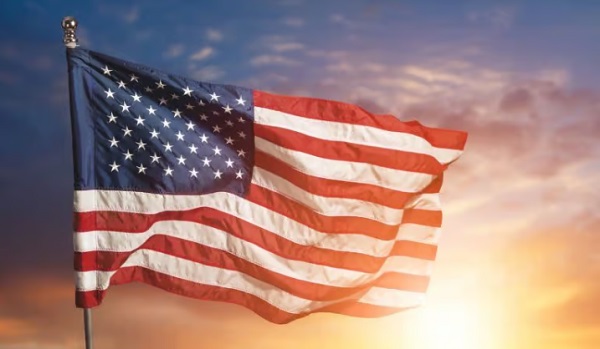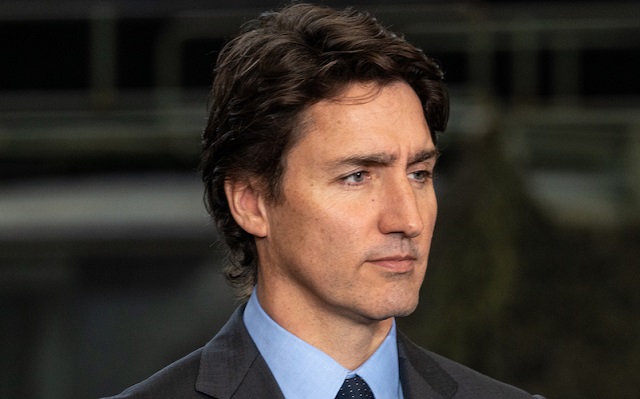Frontier Centre for Public Policy
Is the Price of Reconciliation that we Must Pretend to Believe a Lie?
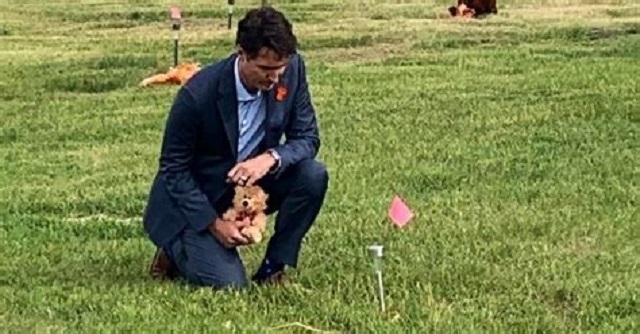
From the Frontier Centre for Public Policy
Even the Kamloops band is backing away from its most extreme claim, that ‘bodies were found’
The price we are being told that we must pay to achieve “reconciliation” is becoming clear. We must pretend to believe a lie.
The lie is that 215, and then thousands, of indigenous students of residential schools were “disappeared” while at the schools — that they died under sinister circumstances while under the care of the priests, nuns and teachers running the schools, and were buried in secrecy.
To top it off, it is claimed that fellow students — “as young as six” — were forced by these evil priests to dig the graves. The fact that there is not one scintilla of good evidence to support this deeply anti-Catholic blood libel is not supposed to deter us from accepting it as fact. We are being told that we must pretend to believe this lie if we want to achieve “reconciliation”.
If there was any doubt that the Assembly of First Nations (AFN) was insisting that Canadians must pretend to believe the false claim, it was dispelled when they angrily rejected the funding cap that the federal government had placed on its ill-considered promise to provide a total of $320 million to indigenous communities that chose to go on their own “missing children/unmarked graves” search.
The chiefs showed who was boss, and the federal government meekly submitted, and cancelled the funding cap.
The government coffers were left wide open, and indigenous communities expanded existing searches for “missing children.” In reality these children were never missing. As Tom Flanagan explains in Grave Error (above), they were “forgotten children” who had been properly buried in marked graves that were subsequently left untended and forgotten by their families.
Be that as it may, as a result of AFN activism, and government and media incompetence, the Kamloops claim morphed into an officially sanctioned lie.
But where is the truth in all of this?
Most of us knew, even when this claim was first made in 2021, that these grisly tales of sinister deaths and secret burials could not possibly be true.
There is simply no historical record of any such thing occurring.
There are no records of parents frantically looking for children who suddenly went missing from residential schools, no police reports of missing children. Nothing.
In fact the extensive records we do have say exactly the opposite — namely that the deaths of children who sadly died of the diseases of the day at residential schools were all properly recorded, and that almost all of the deceased children were buried by their parents on their home reserves.
The small minority who were buried in special school cemeteries, (because the transportation of the bodies back to remote reserves was impractical,) all received Christian burials. Their places of burial were made known to their parents. The fact is that record keeping of indigenous children at residential schools was far superior to record keeping of the children on reserves, where far greater numbers died of exactly the same diseases.
But for reasons best left to future historians to ponder the Trudeau government and its CBC media ally immediately accepted the crackpot Kamloops claim as true. CBC and other gullible media went into overdrive pumping out misinformation in support of the baseless claim, while the Trudeau government ordered all flags on federal buildings across Canada lowered, where they remained for six months!
Trudeau’s indigenous affairs minister, Marc Miller — perhaps the worst Indian Affairs minister in the history of this country — recklessly promised $320 million to indigenous communities that wanted to make similar claims. And, of course, others did almost immediately.
Down the road, Chief Willie Sellars, of the Williams Lake indigenous community, outdid the rhetoric of his colleague, Chief Casimir. According to Sellars, priests had not only killed countless indigenous children, but had thrown their bodies into “rivers, streams and lakes” as well as the usual old standards of throwing bodies into school furnaces and incinerators. Other communities wanting in on the money jumped onto the bandwagon with increasingly fantastical tales.
The result of this Trudeau government recklessness — aided by a gullible media that asked no questions — was predictable. These false stories became etched in stone as the truth within the indigenous community. A victim mentality that was already deeply imbedded became pathological, as indigenous communities became convinced — on evidence that was entirely false — that they were victims of a genocide committed by their neighbours.
The chiefs also silenced the many thoughtful members within their communities who knew that these stories of murderous priests were not true. As investigative reporter, Terry Glavin, explains, even among the Tk’emlups community there were always sensible voices who did not believe those claims:
“From the outset, even among Tk’emlúps people there was a great deal of skepticism and disbelief in stories about nuns waking children in the middle of the night to bury their murdered classmates under the light of the moon”
But instead of heeding those sensible indigenous voices, and even as it became increasingly clear to Canadians that these stories were just tall tales, there was so much money in it that the chiefs doubled down. They insisted that Canadians must pretend to believe that the claims were true.
That would be their price for “reconciliation”.
As noted above, the weak Liberal government gave into this blackmail by removing the funding cap on searches it had tried to impose. But other important institutions cravenly played along with what was now an officially sanctioned lie as well.
Jon Kay explains in his recent Quillette essay how the Law Society of British Columbia is now insisting that anyone who wants to be a lawyer in that province must pretend to believe the “evil priest” line of stories.
Other law schools and law societies across Canada are doing this as well. They are so focused on what they perceive as the holy grail of “reconciliation” that they are prepared to sacrifice a pursuit of truth as their goal, and force their own students — our future lawyers and judges — to do the same.
Our public schools — to bring about “reconciliation — are indoctrinating our children with lessons about the “215 Kamloops graves” and other misinformation, such as the “Charlie Wenjack” story.
Children are taught that Wenjack was abused by Catholic priests and nuns in his residential school, and ran away as a result.
In fact, as author and historian Robert MacBain explains in his important book, “The Lonely Death Of An Ojibway Boy” Charlie Wenjack lived at a Protestant hostel run by a kindly indigenous family, attended school by the day in Kenora, and probably never saw a residential school, or met a priest or nun, in his life.
But, in the interests of “reconciliation” our children are being misinformed by their teachers.
And when a teacher does dare to tell the truth, as when B.C. teacher, Jim McMurtry told his students that the children who died in residential schools died of the diseases of the day — and were not tortured to death, as was being reported — he was frogmarched from his classroom, and summarily fired.
Or Frances Widdowson, who was fired from her tenured university position largely for daring to dispute what was becoming an increasingly extreme residential school narrative.
All of this obvious unfairness, is happening in the name of “reconciliation.” The senior lawyers who oversee the Law Society, and the educators who select our children’s school curricula are doing a great disservice to this country. As are our MPs who foolishly labelled Canada as genocidal, based on the same false Kamloops claim.
As are our senior indigenous leaders, who know by know that the murderous, secret-burying priest story has always been just a silly ghost story that children tell to scare one another. Yet they insist that Canadians must pretend to believe it, or they will withhold the “reconciliation” that they wield like a sledge hammer over our heads.
It should have occurred to everyone by now that if the price of “reconciliation” is pretending to believe a lie, the price is far too high. That kind of “reconciliation” is worth nothing.
In actual fact, what this country and its indigenous population needs is not “reconciliation” at all. Too many indigenous people are stuck at the bottom of the socioeconomic ladder. What they need is not “reconciliation” but integration into the economy, and the opportunity to participate in it. As for the opportunists who exploit a false claim to benefit themselves, they deserve only our contempt.
What nobody needs is a country where citizens must lie to each other in order to stay together.
And now, to add insult to injury, MP Leah Gazan wants to make it a law that we must all lie to each other by criminalizing what she calls “residential school denialism”. She specifically singles out the Kamloops claim as something Canadians must accept as true. As she sees it any Canadian who refuses to do so, or who dares to suggest that the positives, as well as the negatives of residential schooling should be recognized, should be made a criminal. Dostoevsky famously asked if there will come a time “when intelligent people will be banned from thinking, so as not to offend the imbeciles”. Has that time arrived?
Brian Giesbrecht, retired judge, is a Senior Fellow at the Frontier Centre for Public Policy.
Censorship Industrial Complex
Another Mass Grave?

No. One outrageous lie was quickly discounted, yet another lives on, to the detriment of everybody involved.
From the Frontier Centre for Public Policy
The Kamloops claim didn’t come out of the blue. The TRC’s well-publicized “missing children” wild goose chase thoroughly indoctrinated indigenous communities. It convinced foolish people, like Casimir, Leah Gazan and Kimberley Murray, that thousands of “missing children” had been secretly buried all across Canada.
“My brother Rufus saw them take all those children and stand them up next to a big ditch, and then the soldiers shot them all and they all fell into that ditch. Some of the kids were still alive and they just poured the dirt in on top of them. Buried them alive.”
This mass murder happened in 1943 — not in Nazi-held Europe, but in Brantford, Ontario.
So, there you have it — the personal story of a residential school “survivor” describing the day the Canadian Army lined up 43 Indian children in front of a residential school at Brantford, Ontario, shot them and dumped their bodies into a mass grave. The May 27, 2021 announcement that the remains of 215 former students of the Kamloops residential school wasn’t the first time that a claim about sinister residential school deaths and clandestine burials had been made.
This Brantford story is obviously untrue. Any reasonably well-informed person with a lick of sense would know that at a glance.
But that didn’t stop the claim from making the social media rounds for years. According to the fact-check tens of thousands of people have read this bogus claim over the years, and many appear to have believed it completely. In fact, despite the fact checks proving that the claim was entirely false it continues to circulate today.
Both the Kamloops and Brantford claims came basically from the same place — the strange mind of a defrocked United Church Minister, Kevin Annett. It was Annett who created the bogus Brantford claim. In a strange twist, the picture at the top of the page — said to be from Brantford — is actually a photo of the former Kamloops Indian Residential School, as it looked in the 1920s.
And it was Annett who inspired the TRC’s misguided “missing children/unmarked graves” wild goose chase that, in turn, inspired Chief Rosanne Casimir to make the Kamloops claim. Both claims were equally and obviously false: The Kamloops claim was that the “remains of 215 children were found.” In fact, only radar blips (anomalies) were detected- blips that turned out. to most likely be from previous excavations, and not graves. Casimir and Annett both knew that they were making false claims.
Annett’s bogus claims come from his imaginative reworking of stories of “survivors” that he publicized in his blogs, books, interviews and movies.
His most famous movie is Unrepentant. This movie has been viewed by tens of thousands of Canadians, particularly in indigenous communities, such as the Tk’emlups community at Kamloops.
It has won awards, and been praised by eminent people, such as Noam Chomsky. Despite being every bit as false as the claim that the Canadian army shot 43 indigenous children, it actually convinced Member of Parliament, Gary Merasty, that it was accurate history. It is nothing short of amazing that this highly suggestible MP was then able to convince the equally gullible, and newly appointed TRC commissioners that there were many thousands of such “missing children”, as Annett alleged.
The TRC commissioners then launched their “missing children/unmarked graves” campaign despite having no mandate from the federal government to do so. (Independent researcher, Nina Green, describes this in detail here.)
You see, the Kamloops claim didn’t come out of the blue. The TRC’s well-publicized “missing children” wild goose chase thoroughly indoctrinated indigenous communities. It convinced foolish people, like Casimir, Leah Gazan and Kimberley Murray, that thousands of “missing children” had been secretly buried all across Canada.
Indigenous people became hooked on these stories.
Annett’s most famous book is his 393 page opus, “Hidden No Longer.” That book introduced the idea that the deaths of these thousands of “missing children” (his estimates range from 50,000 to 250,000, depending on the telling) constituted genocide. It is absolutely shocking that our MPs actually voted to condemn Canada of genocide based essentially on Kevin Annett’s bogus claims.
Based on those same bogus claims Annett was hired by the Brantford Mohawk community in 2011 to dig up the graves that he claimed existed in the apple orchard area of their residential school. According to Annett, these were the graves of indigenous students who had been secretly killed and buried in the apple orchard at the school, with the forced help of fellow students.
Sound familiar? It should. That was essentially the same grisly tale repeated by Chief Rosanne Casimir years later in Kamloops. (See above.)
Except that the wiser folks within the Brantford Mohawk community twigged on to Annett’s tricks. And when Annett was found on the streets of Toronto, waving around chicken bones, and pretending that they were the bones of children he had unearthed at Brantford, the Mohawk elders came together and publicly denounced Annett as a fraud at a community meeting. They then banished him from their community.
Unfortunately, Casimir became a useful idiot for Annett — just as the gullible TRC commissioners did — and no such leadership has yet come forward from the wiser elements within the Kamloops indigenous community. Those folks are silent, while the more vocal contingent are still sticking to their story that the soil anomalies are the “remains of 215 children,” and not what they almost certainly are — 1924 septic excavations.
So, the questions should be asked: Is the claim that the Canadian army shot 43 indigenous children, and dumped them in a mass grave, any more or less believable than the claim that priests killed and secretly buried 215 children at Kamloops, (or any of the copycat claims that followed it?)
What is it about that Mohawk claim that gives it appeal to only the most gullible among us, while the equally improbable Kamloops claim is still taken seriously by so many people?
On the surface, both claims are outrageous, and have no real evidence to support them. Quite the contrary, every Canadian history book ever written is cogent evidence that both stories are false. But the Mohawk claim was dismissed as the nonsense it obviously was, while the Kamloops claim lives on.
At least part of the answer to those questions appears to be in the response of the government in power, and the media to the claims. If the Brantford claim had been met by a prime minister who immediately ordered that flags be lowered, and offered hundreds of millions of dollars to any other indigenous communities who wanted to make similar claim, no doubt that Brantford claim would have been taken seriously.
Or, if the Brantford claim had been made in a time when a highly ideological CBC would ask no questions, and blindly promote the claim, the results might have been entirely different. As it is, the Brantford claim died a merciful death, while the equally specious Kamloops genocide claim still languishes like a stinking albatross around the neck of every Canadian.
Although the international community is increasingly broadcasting the obvious fact that the Kamloops claim is bogus Canada’s media remains asleep. That is not likely to change until leadership changes in Ottawa, and at the CBC. Pierre Pollievre, when questioned on this topic, stated clearly that he stands for historical truth, accuracy, and a full investigation into all questions pertaining to claims about residential school deaths. Hopefully, that means that excavation and a full inquiry will follow.
But Tk’emlups indigenous elders better wake up, like the Mohawk elders did. You are not doing your communities a favour by letting politicians and journalists treat you like children, by pretending to believe your bizarre claims. These false claims are already doing great damage.
Fortunately, there are many thoughtful indigenous people who do not blindly accept the claims about murderous priests and secret burials.
Here is one such wise indigenous person. He is a priest, and he is willing to do what our federal government and our CBC failed to do from the beginning namely to intelligently discuss the issue.
Thoughtful people like this need to be involved in a full investigation that will clear the air about the Kamloops claim, and get Canada back on track.
Brian Giesbrecht, retired judge, is a Senior Fellow at the Frontier Centre for Public Policy.
Frontier Centre for Public Policy
Hungarian Revolution of 1956: A Valiant Effort to Overthrow Communist Rule
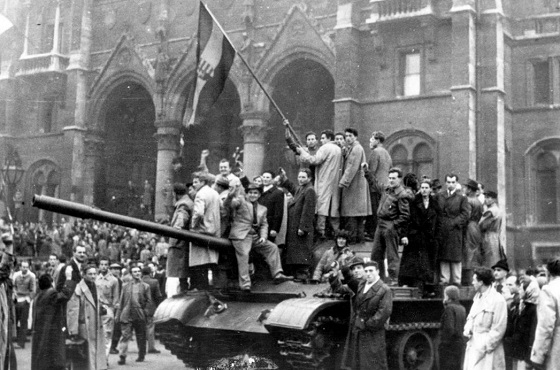
Civilians wave Hungary’s national flag from a captured Soviet tank in Budapest’s main square during the anti-communist uprising of October 1956. AP Photo
From the Frontier Centre for Public Policy
By Gerry Bowler
For a time, Moscow seemed willing to accept change in Hungary, but when Nagy announced that his country would leave the Warsaw Pact and become neutral in the Cold War, that was a bridge too far for Khrushchev.
After World War II ended in the summer of 1945, the Soviet Red Army found itself to be in possession of Eastern Europe. In the next few years, the USSR extinguished the young democracies in Poland, Czechoslovakia, Romania, Latvia, Lithuania, and Estonia, while imposing Stalinist governments on autocracies such as Bulgaria and Hungary. With Marxist regimes taking over in eastern Germany, and Albania and Yugoslavia as well, Winston Churchill spoke truly when he said that “from Stettin the Baltic to Trieste in the Adriatic, an iron curtain has descended across the continent.”
In many of these countries, there was considerable resentment over the Russian occupation. In the Baltic republics, Romania, Croatia, Belarus, Poland, and Ukraine, doomed anti-Soviet guerilla movements with names like the “Forest Brothers,” the “Cursed Soldiers,” or “Crusaders,” fought underground wars that\ lasted for years. In June 1953 in East Berlin, workers rose up in protests against their communist masters, sparking a short-lived rebellion that spread to hundreds of towns before being crushed by Russian tanks. The most serious of these insurrections was the Hungarian Revolution of 1956. By 1956, there were stirrings of discontent in the Hungarian People’s Republic. Under the state control of industry, forced agricultural collectivization, and the shipping of produce to the Soviet Union, the economy was in bad shape. The supply of consumer goods was low and standards of living were dropping. Secret police surveillance of the population was harsh, while many Hungarians resented the suppression of religion and the mandatory instruction of the Russian language in schools. As news leaked out about Soviet Premier Nikita Khrushchev’s denunciation of Stalin in the so-called “Secret Speech,” hopes grew that reform of the communist system was possible.
Marxist intellectuals began to form study circles to discuss a new path for Hungarian socialism, but their cautious proposals were suddenly overtaken by demands for change by young people. On Oct. 22, 1956, students at the Technical University of Budapest drew up a list of demands for change known as the “Sixteen Points.” They included free elections, a withdrawal of Soviet troops, free speech, and an improvement in economic conditions.
On the afternoon of the next day, these points were read out to a crowd of 20,000 who had gathered at the statue of a leader of the Hungarian rebellion of 1848. By 6 p.m., when the students marched on the Parliament Building, the crowd had grown to around 200,000 people. This alarmed the government, and later that evening Communist Party leader Erno Gero took to the radio to condemn the Sixteen Points. In reaction, mobs tore down an enormous statue of Stalin.

People surround the decapitated head of a huge statue of Josef Stalin in Budapest during the Hungarian Revolution in 1956. Daniel Sego (second L), who cut off the head, is spitting on the statue. Hulton Archive/Getty Images
On the night of Oct. 23, crowds gathered outside the state broadcaster, Radio Budapest, to demand that the Sixteen Points be sent out over the air. The secret police fired on the protesters, killing a number of them. This enraged the demonstrators who set fire to police cars and seized arms from military depots. Army units ordered to support the secret police rebelled and joined the protest. The government floundered; on the one hand, they called Soviet tanks into Budapest; on the other hand, they appointed Imre Nagy, seen as a popular reformer, as prime minister.
As barricades were being erected by protesters and shots were being exchanged with secret police units, Nagy was negotiating with the Soviets who agreed that they would withdraw their tanks from the capital. Over the next few days, the rebellion spread; factories were seized, Communist Party newspapers and headquarters were attacked, and known communists and secret police agents were murdered. The new prime minister released political prisoners and promised the establishment of democracy, with freedom of speech and religion.
For a time, Moscow seemed willing to accept change in Hungary, but when Nagy announced that his country would leave the Warsaw Pact and become neutral in the Cold War, that was a bridge too far for Khrushchev. Fearing the collapse of the entire Soviet bloc, he made plans for an invasion of Hungary. By Nov. 3, the Red Army had surrounded Budapest, and the next day heavy fighting erupted as armoured columns entered the city. Some units of the Hungarian army fought back, joined by thousands of civilians, but the end was predictable. After a week of battles, with over 20,000 dead and wounded, resistance crumbled. A new Soviet-approved government under János Kádár purged the army and Communist Party, arrested thousands, and executed rebel leaders including Nagy.
Hundreds of thousands of refugees fled, many of them settling in Canada and the United States. World condemnation of the USSR was strong; critics of the Soviets included many communists in the West who resigned their party membership. Not until the collapse of the Soviet hold on Eastern Europe in 1989 did Hungarians get another taste of freedom.
Published in the Epoch Times.
Gerry Bowler, historian, is a Senior Fellow at the Frontier Centre for Public Policy.
-

 Brownstone Institute2 days ago
Brownstone Institute2 days agoThe Most Devastating Report So Far
-

 Business2 days ago
Business2 days agoCarbon tax bureaucracy costs taxpayers $800 million
-

 ESG1 day ago
ESG1 day agoCan’t afford Rent? Groceries for your kids? Trudeau says suck it up and pay the tax!
-

 Daily Caller1 day ago
Daily Caller1 day agoLos Angeles Passes ‘Sanctuary City’ Ordinance In Wake Of Trump’s Deportation Plan
-

 John Stossel1 day ago
John Stossel1 day agoGreen Energy Needs Minerals, Yet America Blocks New Mines
-
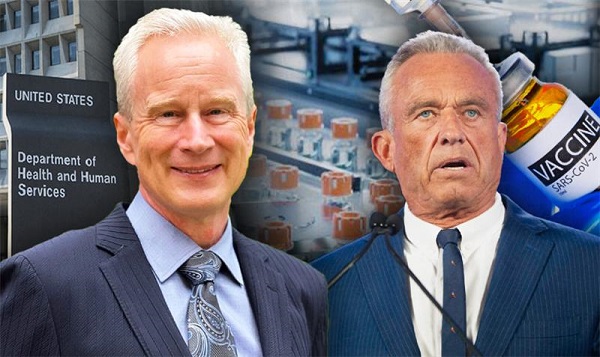
 COVID-192 days ago
COVID-192 days agoDr. McCullough praises RFK Jr., urges him to pull COVID shots from the market
-

 Alberta1 day ago
Alberta1 day agoProvince considering new Red Deer River reservoir east of Red Deer
-

 MAiD2 days ago
MAiD2 days agoOver 40% of people euthanized in Ontario lived in poorest parts of the province: government data



